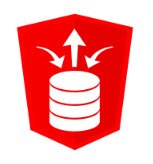I was having a discussion with my boss about the impact of 3rd party apps on the way we work, and how difficult things are when you have to deal with 3rd party apps, as opposed to just writing your own software.
It’s easier to do things well when you are in control of all the pieces. Most of the examples you see are people writing their own software, typically on new projects. That’s very different to dealing with old projects and 3rd party apps. I’ll give you some examples, without trashing the companies responsible for this.
Example 1
Our student system is provided by a 3rd party. The company in question has a really antiquated way of delivering applications. In recent years they’ve tried to resolve this by writing their own delivery mechanism, made up of some custom software and Jenkins. The problem is, this is just a wrapper over the old process, so it is not the most reliable tool in the world. Someone like me would describe it as putting lipstick on a pig.
In addition to that, you have to use a GUI to perform the operations. At this point there is no API to allow you to script operations, which makes building them into a bigger process really problematic. We have internal development which is gradually moving to something resembling CI/CD, but it will never truly meet that goal, because we have to include manual management of things because of the limitations of the 3rd party software.
I’m sure long-term customers see the new delivery mechanism as a great improvement, but it’s not something you would deliver for a new product. It’s less painful than it was, but not really good.
Example 2
We have a publishing system that is written in Java and runs on Tomcat. It is so close to being hands-off, but there are a couple of problems.
- When you deploy a new version, it starts in maintenance mode and you need manual interaction to click an OK button a few times on a web-based maintenance screen. I’ve never “not clicked” the OK button, so I just want a “just do it” option, so I can let it get on with it.
- When some features are enabled by the power users, the next restart of the application flips you into maintenance mode. We’ve had P1 incidents because a host failure has caused the VM to start on a new host, and because a user has enabled a new feature in the app, the automatic startup stalls, waiting for me to click the OK button a few times.
There are some other annoyances, which impact on availability and possible topology, as well. There is no way to resolve these because of limitations in the application. All we can do is raise enhancement requests with the vendor.
I could go on with more examples, but I think you get the message.
So what do you do?
It can be quite disheartening when you want to do things well, but you have to keep compromising because of factors outside your control. You have to try not to give up, and just keep plugging away.
- Don’t make unrealistic comparisons between your environment and others. There’s no point comparing your mixed environment to a software house. I’ve worked in both. They are very different. Take what works. Ditch what doesn’t.
- Semi-automated processes are better than processes that are 100% manual. Maybe you can use Robotic Process Automation (RPA) to automate what is essentially a manual process.
- Try to make sure these considerations become part of your procurement process, or you will keep buying crap.
- Try to be creative and find workarounds, don’t just bury your head in the sand. There’s always *something* you can do to improve things.
- Even if something is terrible, that doesn’t stop you improving the processes around it.
I guess you should focus on the values, rather than trying to exactly match some prescriptive ideal.
Good luck!
I wrote a series of posts about automation here.
Cheers
Tim…
PS. I’m pretty sure my boss is reading this laughing, as I’m following none of this advice myself, but instead stomping round the place like a thirteen year old having a strop because, “Everything is crap!” 🙂





